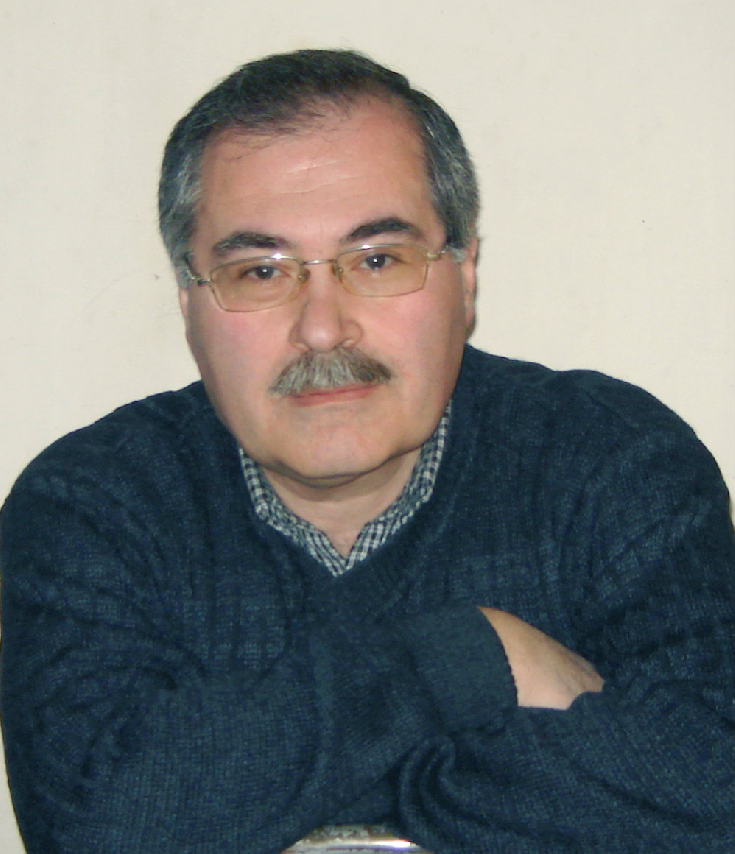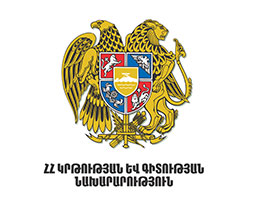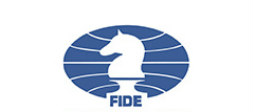
 ChessAcademy.am
ChessAcademy.am
Secondary School Chess Textbooks’ Characteristics According to the Editor in Chief, Armenologist Gagik Minasyan
 Gagik Minasyan, armenologist and editor in chief of the weekly magazine ‘Education’, led the editorial process of chess textbooks. Minasyan's long history with the Chess Academy of Armenia started many years ago when he collaborated with international GM Mr. Lputian, the founder and the president of the Academy. Their shared vision of founding the Academy was turned into reality with the support of former Armenian Prime Minister of RA Andranik Margarian.
Gagik Minasyan, armenologist and editor in chief of the weekly magazine ‘Education’, led the editorial process of chess textbooks. Minasyan's long history with the Chess Academy of Armenia started many years ago when he collaborated with international GM Mr. Lputian, the founder and the president of the Academy. Their shared vision of founding the Academy was turned into reality with the support of former Armenian Prime Minister of RA Andranik Margarian.
Since 1993, when Mr. Minasyan was the head of the educational department in Spandaryan District of Yerevan, the schools under his supervision started teaching chess as an elective subject. As a result, chess became a part of the curriculum in several schools in the center of Yerevan. However, during this time, chess was still regarded as a secondary subject and was not included in the national school curriculum by the Ministry of Science and Education. Mr Minasyan was later involved in the implementation of the Chess in Schools (CIS) program and became the chief editor of chess textbooks. He has noted that in the 1970s there was a failed attempt in the Soviet Union to introduce chess into the school system. According to Mr. Minasyan, in order to turn the CIS program into reality, it was necessary to not only have a team of devoted chess specialists, but also a group of willing political leaders who value the importance of the program.
Due to the efforts and hard work of grandmaster Smbat Lputian, and the support and sponsorship of the President of RA and President of Armenian Chess Federation, Serzh Sargsyan, chess eventually became a compulsory subject in public schools in 2011.
The key to Mr. Smbat Lputian’s success was the fact that he had a team of high-skilled professionals around him. He was able to establish high-level cooperative relationships with the Ministry of Education and Science of RA, which had to take on responsibility for implementing the Chess in Schools program. The creation of the Chess textbooks, manuals and workbooks directly contributed to the project’s success. The author of the books, Hamlet Toomanyan, and a number of prominent specialists were involved in this process. The team comprised chess players and methodologists, chess commentators and journalists. Mr. Minasyan was the one who took on the responsibility to edit the books, workbooks as well as the manuals for teachers. Along with chess teaching, cooperation with Pedagogical University included the research in chess. Scientific research by psychologists and sociologists that proved the effectiveness of chess teaching highlighted the importance of CIS project implementation. The former Minister of Education and Science of RA, Armen Ashotyan, on one occasion stated "chess became the brand of Armenia in the whole world”.
Mr. Minasyan assured that the work itself was so interesting for the editorial group that, in many cases, it allowed for improvisation, joint creative work, and the exchange of experiences within the group, thereby contributing to the improvement of their professional qualifications. As a result of this cooperation, Mr. Toomanyan wrote the books for grades two to four, while Samvel Misakyan authored textbooks for grades five to nine. Now the editorial staff has the task to publish the revised editions of textbooks for secondary schools, as there are a number of corrections, as well as enhancements that can be done in order to improve the quality of chess textbooks.
According to Mr. Minasyan, the theory of chess in Armenia is underdeveloped. As followers of the Soviet chess school, the difficulty relating to the translation of a number of chess terms could not be avoided. Disputes relating to Armenian translations of several chess terms arose during the editing process of the textbooks. There was one more problem related to the translation of the chess terms into Armenian: since there were certain terms that were unfamiliar to chess players and innovation is usually met with resistance, the editors had to prevent the rise of public opposition. In this context we had to make an attempt to develop Armenian chess terminology. Thus, Mr. Minasyan persuaded the editorial team to choose some new chess terms. For example, the book uses the term "support field" that has previously been translated into Armenian as a "key field", based on its Russian equivalent "ключевое поле". Due to the content analysis of the term, a decision was made to use the "support field" term in the textbooks. Following the same principle, the term "suicide rook” is used in the textbooks. These, amongst other terms, caused a number of professional discussions.
Mr. Minasyan noted that he had an idea, for instance, to name one of the two most important chess pieces, the queen, as “Commander" (sparapet). As we know, when translated from Persian this piece is called "ferz,", the second most senior person in the country. In French that piece is called "garde'," the cardinal, who is also the second most senior person after the king. Only in English is the strongest piece called the queen. Taking into account the existing names of the chess piece in Oriental languages, Mr. Minasyan suggested that the “queen” piece should be called "Commander" (sparapet). Indeed, if we compare chess with martial arts and the chess board with a battlefield, where the army's commander in chief is the most powerful piece, the Armenian name of this piece could also be “commander” (sparapet). Thus, if the piece was named "The Commander”, it would reflect both its essence and the function. However, knowing that this option of translation can be surprising or confusing for professionals, as well as amateur players, and could consequently cause opposition and universal discontent, it was decided that the former term should be used and this innovation was not included in secondary school textbooks.
While working on the textbooks the authors did not use any other authors’ books. As the books were the first comprehensive chess books for secondary schools, there was an attempt to create a kind of textbook which would contain all of the authors’ copyrights. Positive feedback about the books by both Armenian and foreign experts come to prove that the editorial team achieved its goals. It should be noted that the author of the book, Hamlet Toomanyan, in fact, provided the chess classes contained in the book. The experienced methodologists then worked together to create the whole content, without which the book would simply lose its public function as a textbook, as opposed to merely a problems book.
Speaking about the criticism voiced against the textbooks, including opinions that they are quite difficult for the junior school children, Mr. Minasyan said that it is mainly due to another problem in this field: the lack of qualified specialists. The teachers, whose professional qualifications are not advanced enough to solve the difficult problems in the books, keep criticizing the authors and editors. In order to prove his opinion, Mr. Minasyan mentioned an experiment that he carried out with the teacher-methodologist, Samvel Misakyan. Choosing the Syunik region and Artsakh schools, they had organized a training course at secondary schools where the chess classes were led by Samvel Misakyan. The pupils were taught the most difficult chess lessons, with 90% of the children totally perceiving and understanding them. In other words, this experience came to prove that the problem is not in the textbooks, but in the teaching provided to pupils.
The concept of chess learning is well encapsulated by GM, 9th world champion Tigran Petrosian's idea that chess is sports, science and art, and the child needs to communicate simultaneously with the three elements of nature. According to Minasyan, the mission of the chess textbook is to provide these three elements.
As for future work to be done, Mr. Minasyan emphasized the adjustment and updating of re-editions of secondary textbooks to meet junior pupils' needs and to promote the harmonious development of their intellectual and mental capacities.
When referring to the idea that for a very long time chess has been perceived as a military model for war conduction, Mr. Minasyan concluded that there is also a need to invest in the military educational institutions as a mandatory subject, and for that purpose it would be necessary to develop another textbook for future officers of the armed forces.
By Tatev Khachatryan




